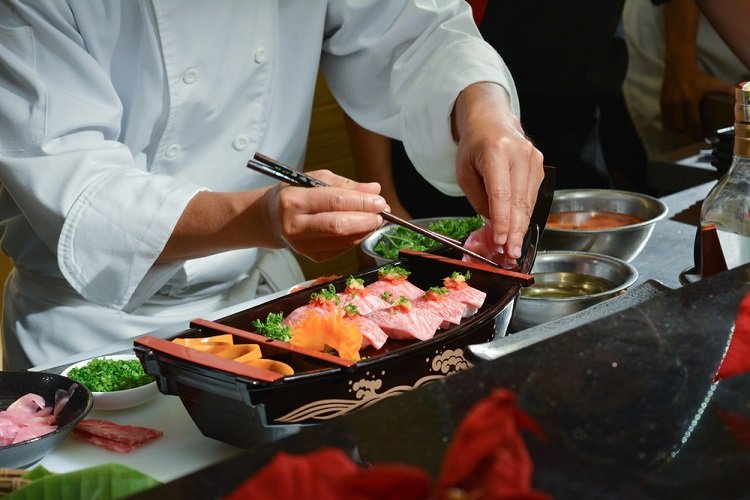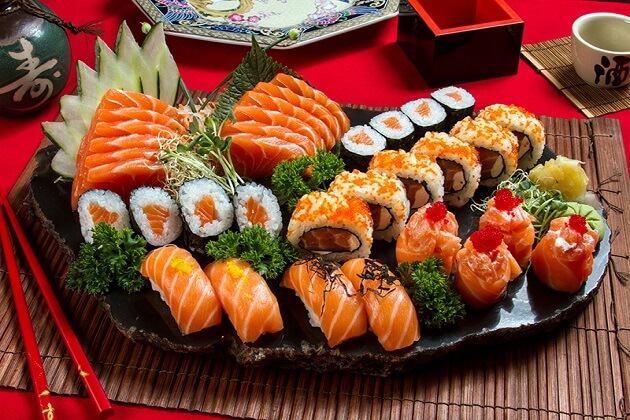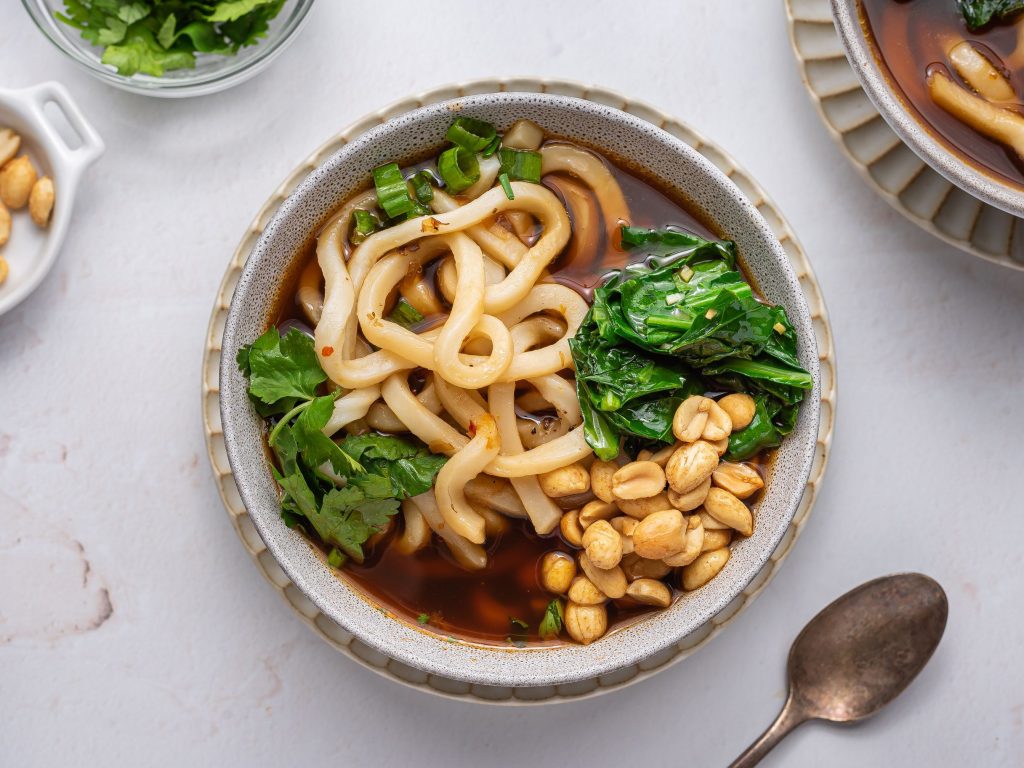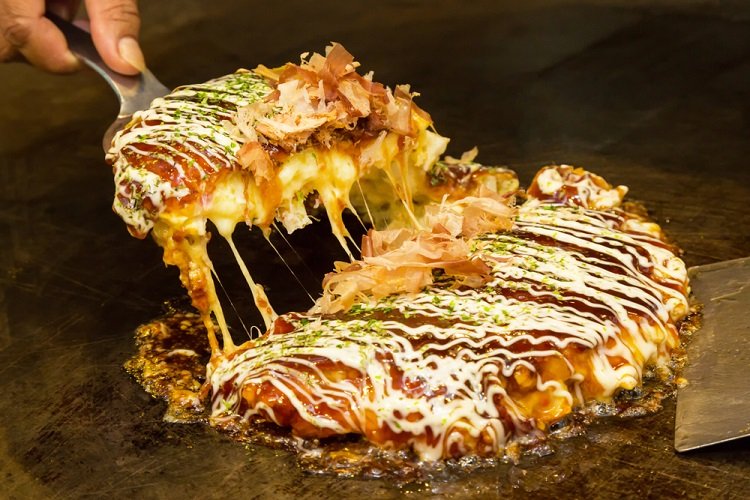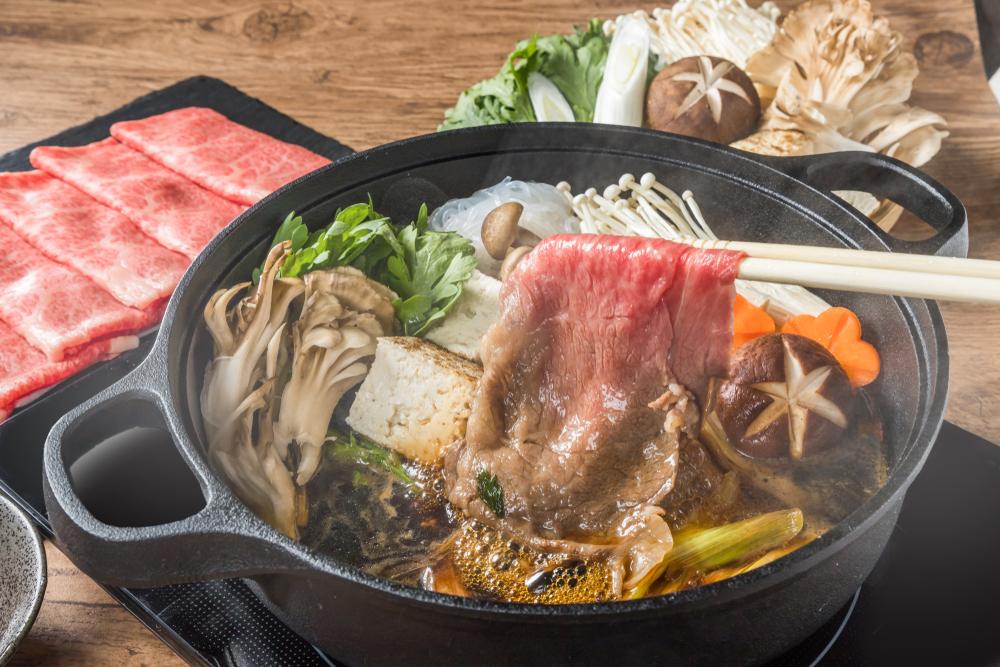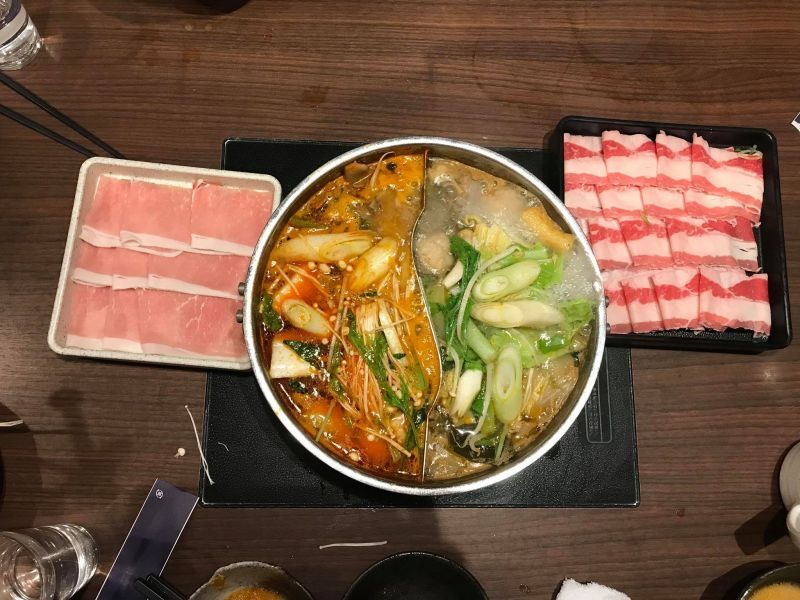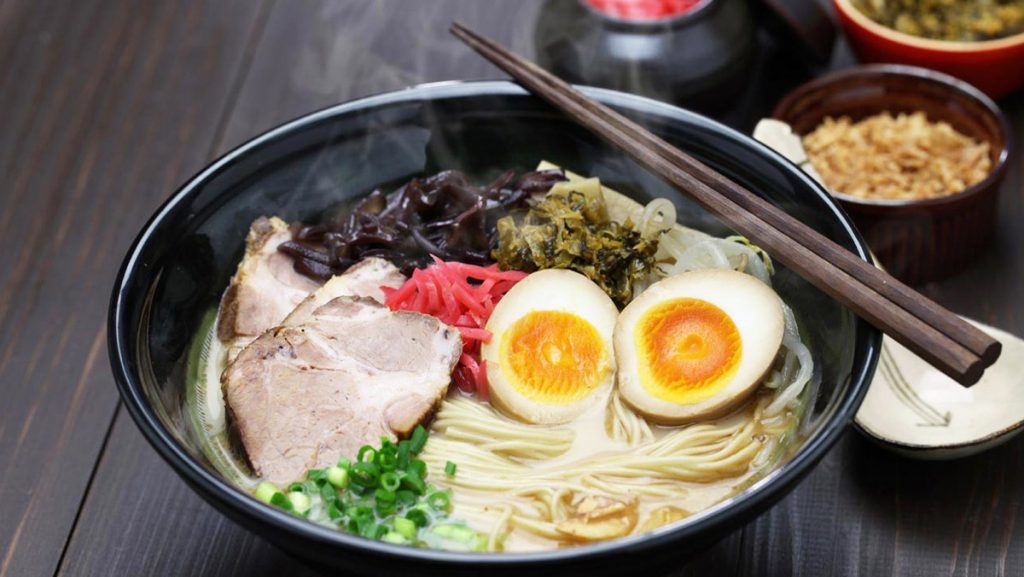When talking about Japan, we cannot help but mention Japanese specialties with delicious and famous Japanese dishes. With the delicacy of the dishes, the variety in the processing ingredients have created the unique characteristics of Japan. WHAT TO EAT IN JAPAN
People often pay attention to Japan thanks to the fragile beauty of cherry blossom petals, but Japan attracts me by its very special traditional cuisine. Maybe, you have not had the opportunity to set foot in Japan and you only have the opportunity to try the delicacies of this country of the Rising Sun in Vietnam, right? Indeed, traditional Japanese dishes ensure both the look and the taste! So do you know anything about Japanese cuisine yet? Let’s find out with Xinvisaquocte through this article!
Japan visa interview experience: Click here
XINVISAQUOCTE – A PRODUCT OF TRANLETOUR
Analysis of Japanese culinary culture
Japanese culinary culture has the interference of many different countries. The most popular is a delicate and harmonious blend of Japanese and Chinese dishes with Western countries. Japanese food is usually very healthy and yet very low in calories. However, every dish is guaranteed to provide all the necessary nutrients for the body. Soybeans and seafood, vegetables are the main ingredients to prepare dishes in Japan.
Culinary philosophy
If you have ever eaten Japanese food, you will know that most dishes in Japan follow a rule that they are “three five” including five dharmas, five colors and five flavors.
- The five dharmas include: frying, steaming, simmering, grilling, and river.
- Five colors include: red, black, blue, white and yellow.
- The five flavors will be: sour, spicy, face, sweet and bitter.
When cooking food in Japan they place great emphasis on purity in taste, which is reflected in the way they use cooking ingredients such as soybeans, fish, seaweed, vegetables, and rice. They very limited the use of spices when cooking. The arrangement and decoration of the meals are also elaborated especially delicately, skillfully and harmoniously between colors, aromas and flavors.
Expressing cultural significance
Each Japanese dish is not only beautiful and delicious, they also contain extremely good meanings. As a new wish, Sake in the new year has the meaning to exorcise evil spirits, prolong life, tofu with wishes of good health, they will always make the family happy with water cod roe. Shrimp often represents longevity, Sea bream Sushi turns into a wish for prosperity,…
LIST OF POPULAR JAPANESE FOOD:
1. Japanese specialties – Sashimi
Sashimi is an appetizer in a formal meal in Japan. In cuisine, sashimi is considered a Japanese culture that emphasizes sophistication. What is Sashimi is the common name for dishes whose main ingredients are fresh seafood. Sashimi translates into Vietnamese as slicing the body, which means cutting raw meat to eat. This is a traditional Japanese dish, the main ingredient is fresh seafood.
Sashimi has a main ingredient of fresh seafood because they believe that seafood dishes in general, especially fish, are very beneficial to the health of the eater, helping to increase intelligence, bright eyes…
2. What to eat in Japan – Sushi
The first sushi in Japan appeared a long time ago, about 1300 years ago, until now, sushi has been varied with all kinds of different flavors and ingredients. Also made from rice, but Japanese sushi clearly shows the long-standing culture of the “land of cherry blossoms” as well as the ingenuity of the people of this country. WHAT TO EAT IN JAPAN
For a long time now, sushi is considered one of the popular dishes in Japanese meals, just like rice in Vietnam. On traditional occasions, sushi is always present in the most important and solemn positions of the party table with a variety of flavors and colors. The Japanese often pack sushi from rice mixed with vinegar with different foods such as cucumber, egg, squid, tuna, shrimp, etc.
3. Japanese specialties – Sake
For the Japanese, Sake is not simply a drink in meals, Sake is not only a bridge between people and people but also a bridge between humans and gods. Sake is considered the “National Drink of Japan” since ancient times and is made from rice and water. Especially in winter, enjoying a sip of sake can warm the body or drinking chilled wine in summer will feel the same taste as high-quality wine.
4. What to eat in Japan – Udon noodles
Udon is a noodle dish made from a mixture of flour, water, and salt mixed together. Experiencing the kneading process, when made, Udon will have a characteristic milky white color. As for the Udon noodle soup, this is a mixture of soy sauce, dashi and mirin, possessing a sweet and extremely delicious taste. JAPANESE SPECIALTIES
Currently, to meet the enjoyment of many people, Udon noodles have many new flavors. However, Udon noodles with traditional broth are always appreciated by Japanese people and foreign diners.
5. Japanese specialties – Okonomiyaki pancakes
Okonomiyaki is a very popular dish not only for Japanese people but also for visitors to Osaka. In Japanese, the meaning of the word Okonomiyaki is “freely grilled”. Cake is a mixture of rice flour, eggs, vegetables, meat and many other ingredients that are baked. WHAT TO EAT IN JAPAN
During the baking process, chefs often add cabbage toppings on top of the eggs. Then, when the cake is cooked, it will be sprinkled with sauce and seasoned with mayonnaise, seaweed and tuna meat. Okonomiyaki pancakes make diners curious so that during the process of enjoying, they think about what ingredients they have eaten a cake?
6. Takoyaki Octopus Dumplings
Besides pancakes as mentioned above, Takoyaki octopus cake is also considered a cake with bold flavors of Osaka city, Japan. The cake is fried with a crispy outer shell and a soft filling. After frying, the cake is sprinkled with a layer of meat sauce on the surface of the cake, adding a little seaweed, tuna meat or onion. This dish is often eaten by diners using skewers.
7. Japanese specialties – Sukiyaki beef hotpot
Next is Sukiyaki, this is a famous hot pot dish in Japan that is prepared right on the table by cooking together thin slices of beef with vegetables, tofu and noodles. This dish is served in a very shallow pot of iron alloy. The main ingredients of sukiyaki hot pot are thinly sliced beef and mushrooms, tofu, onions, shirataki… WHAT TO EAT IN JAPAN
The top-notch beef pieces that come in the hot pot are usually thinly sliced, briefly dipped in hotpot broth and then dipped into a bowl of beaten raw eggs, the heat of the beef makes the eggs cooked and forms a thin layer around the outside. The soft and sweet taste of beef mixed with the fatty taste of eggs is very attractive, once you have eaten it, you will surely only be addicted to its deliciousness. Not only the diners coming to Japan like this dish because of its uniqueness and deliciousness, but Japanese families also quite like this dish. Family members often sit around the steaming Sukiyaki pot and enjoy this hot, delicious dish.
8. What to eat in Japan – Shabu Beef Hotpot
Shabu is a typical Japanese hot pot dish. When eaten, thinly sliced meat is dipped in a pot of hot pot cooked with vegetables, mushrooms, tofu, etc. After being dipped, the meat will be enjoyed with a custom sauce. select. Shabu shabu is believed to have originated from a Chinese dish from Beijing, called Shuan Yang Rou, cooked in a Huo Guo Zi (hot pot). However, it is different from Shabu when using thinly sliced lamb and large pieces instead of using beef like Shabu. WHAT TO EAT IN JAPAN
The reason this hot pot dish is called Shabu Shabu is because it simulates the image and sound when dipping a thin piece of beef over and over in the hot pot. The main type of meat used when eating Shabu Shabu hot pot is beef or pork, but depending on the locality, goat meat, chicken, octopus or fish such as yellow snapper are also used.
9. What to eat in Japan – Curry rice
Curry is a very familiar dish in the daily life of the Japanese. In Japan, Curry is not only eaten with rice, but also created into many other types of dishes such as: Curry Soba noodles, Curry Udon noodles, etc. If Indian Curry is cooked from a variety of herbs and Chicken, Lamb, Japanese Curry is made from Curry Powder and Beef, Pork, etc. This is also a special feature of this Japanese dish.
10. What to Eat in Japan – Okonomiyaki / monjayaki (Seafood Cake)
Okonomiyaki, also known as pancakes, is considered a Japanese pizza. This is a familiar dish, also a long-standing traditional dish originating from Osaka, by putting a small piece of octopus in flour and shaping a ball with a diameter of about 3-5cm, then grilled. . The favorite point is that in addition to the octopus, things like Tenkasu powder, scallions, and red ginger are removed, then grilled in a state where the skin is thin and slightly hard on the outside, and the inside is thick like Monjayaki.
11. Japanese specialties – Ramen
Ramen is a very famous noodle and is also considered as one of the pure Japanese noodle dishes after Udon, Soba or Somen. According to some documents in 1665, warlord Tokugawa Mitsukuni was the first person to taste Chinese noodles treated by a Confucian. Then in 1884 a shop in Hakodate city advertised the service of “Nanjing Soba” in the Hakodate Times. Nanjing soba was officially introduced in Yokohama in the middle of the Meij era and Ramen was officially served at Rairaiken in Asakusa in 1910.
Ingredients of a bowl of Ramen noodles will include: Noodles are made from wheat flour, water, salt and ash water. The form of Ramen noodles is also quite diverse, but basically, they are all the same in terms of ingredients and recipe. Ramen noodle soup is formed from the blending of Dashi and Tare. Dashi for Ramen noodles is cooked from chicken bones, pork bones, beef bones, dried fish shavings, kelp, sardines, Shiitake mushrooms, seafood, onions, etc. Tare are spices that are added to Dashi broth to create flavor. taste for noodles. Tare seasoning of Ramen includes Shio, Shoyu and Miso. In addition, Ramen has some other ingredients such as fresh vegetables, pork, dried vegetables and boiled eggs. JAPANESE SPECIALTIES – WHAT TO EAT IN JAPAN

